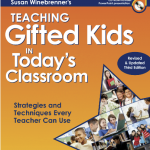It’s March already, and I don’t know about you, but at our elementary school, student motivation is lacking at this time of the year. The old students know that state testing is coming up. They also know that their teachers are feeling the pressure as well. They are getting ready for Spring Break and then it’s the fourth quarter slide, where everything just goes downhill.
As teachers, we look at this time as some of the most crucial learning times of the school year. We need to get them ready for the next grade level. We need to make sure the humans that we have poured all of our heart and soul into, will continue to grow and become productive citizens in their next classroom. That’s a lot of pressure! We also need to worry about their social and emotional health each day. We all know the kids in our classroom are more than just test scores. They are people that have big emotions and still need support in other areas than just academics. How do we keep our kids motivated? How do we show them that what they are doing matters and that it is important? It comes down to the “why” of the instruction. The “why” should always be a part of our lessons. Sometimes as teachers, we don’t even know why they need to know a particular standard, but it is our job to do just that. Figure out the “why”.
Having real-world connections as part of our lessons can assist in the “why are we learning this” debate you may be having with your class. Some students don’t see how learning decimals are relevant to what they are doing every day. We need to be the ones to guide them and show them how we can use what we are learning in our everyday lives. They may not always enjoy the content, but they always need to know the purpose. I just purchased a car recently and I can tell you from experience that understanding the interest rate including decimals made a difference in my car payment. Students need to understand the purpose of their learning. When I sit at a professional development meeting, as a teacher, I always want to know what I am going to use this for in my classroom. Kids feel the same way. Why is this important and what am I ever going to use this for?
We need to take the time to make our lessons purposeful and include the reasoning why we are including this. Of course, we all know that we need to teach the standards, but we need to get to the core of how students are going to use this information in their lives. How is this going to help them make decisions? How can we show them that they will in fact need to learn to add and subtract? They need to learn that reading is vital to all parts of life.
Sometimes teachers need to get re-motivated as well. The fourth quarter is almost here! What can we do to make a difference in the lives of our students tomorrow? What can you do in your classroom today to help your students see the purpose in their learning?
Image from chrissyricker.com









